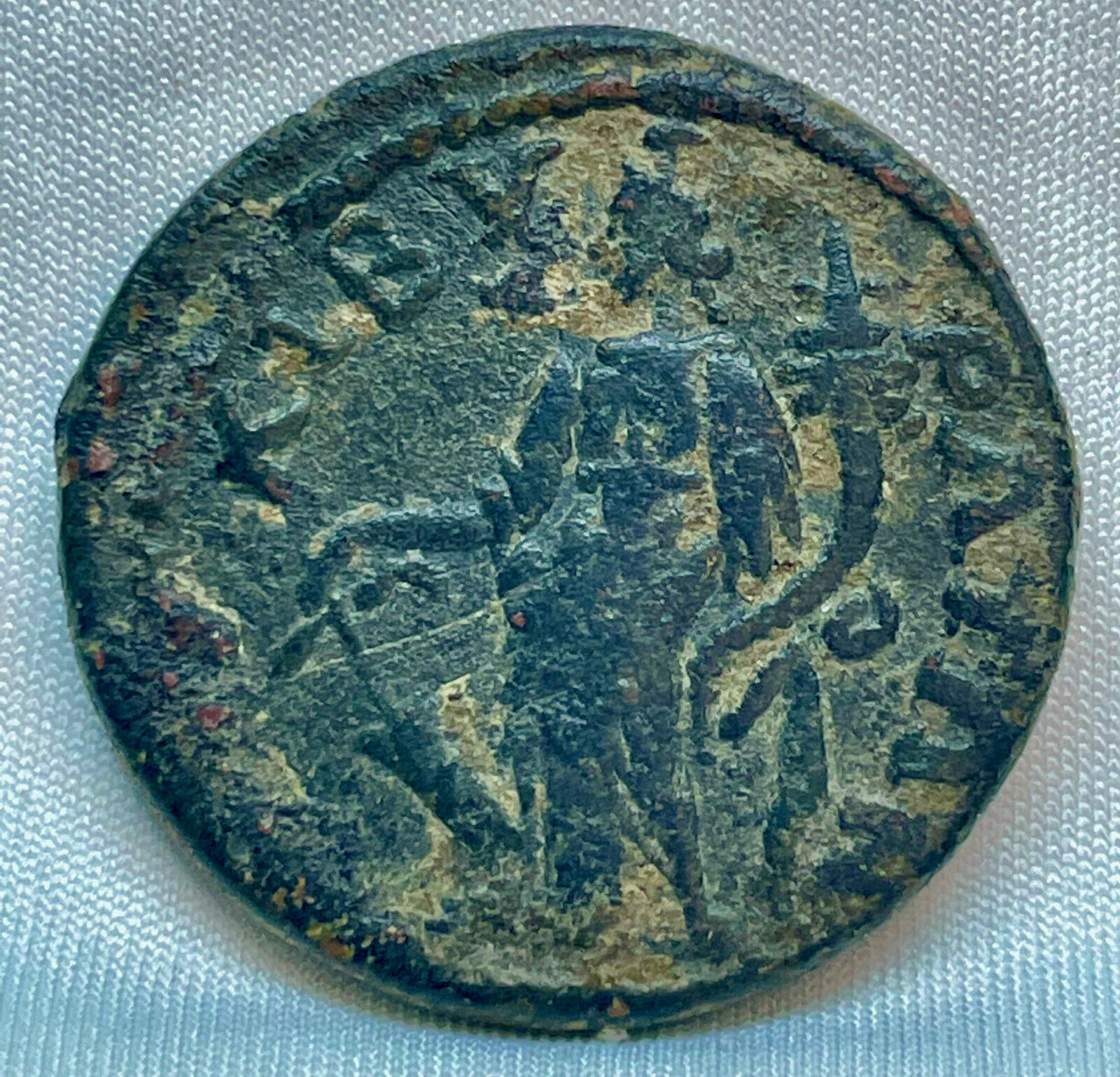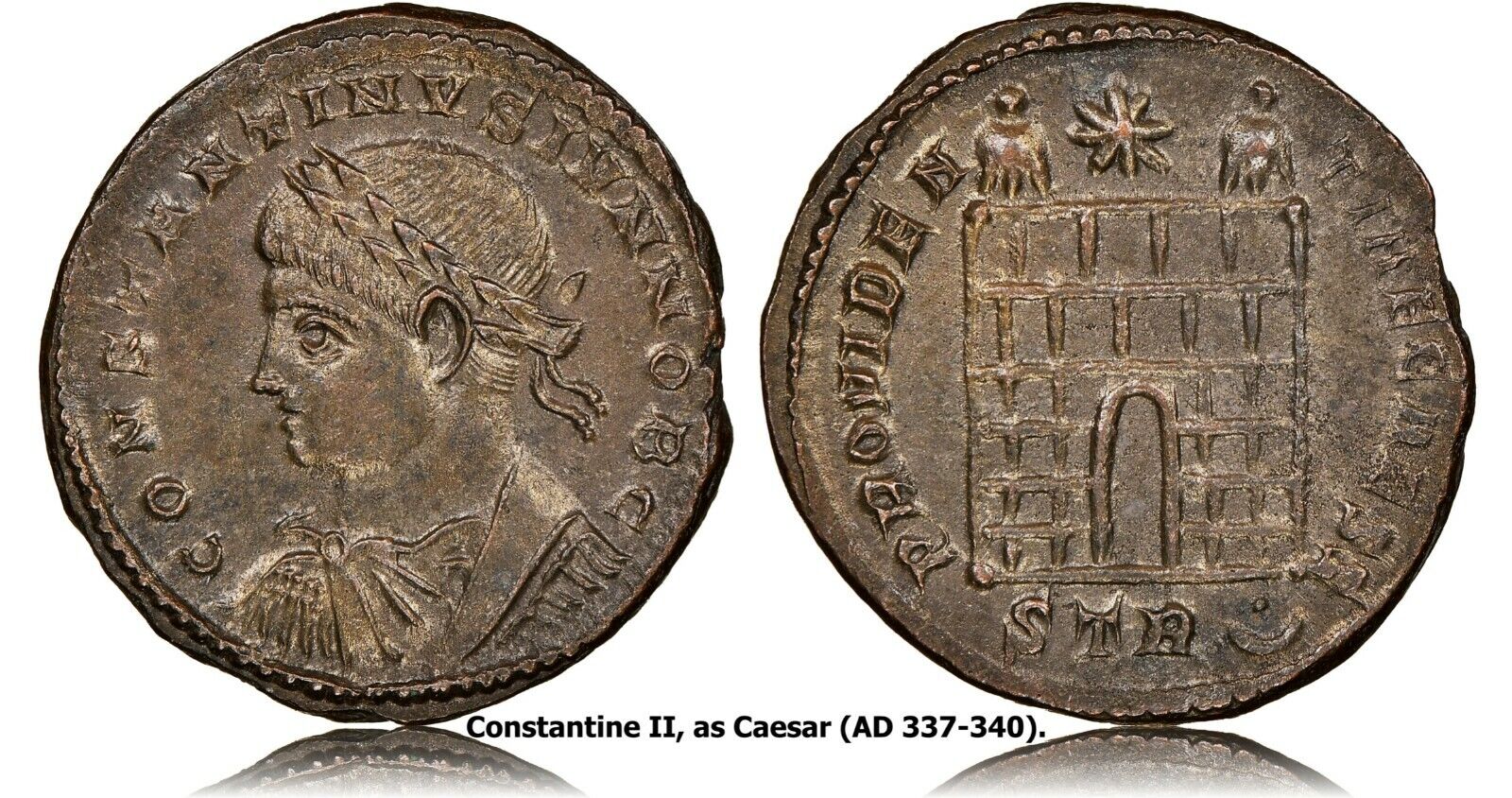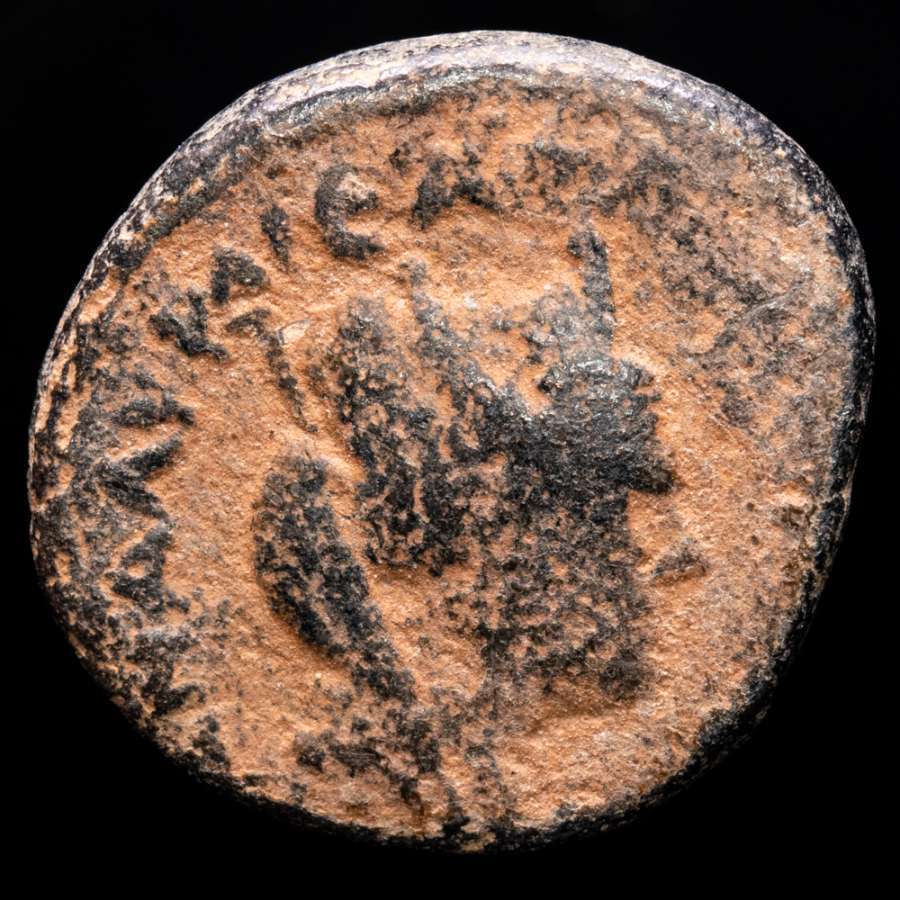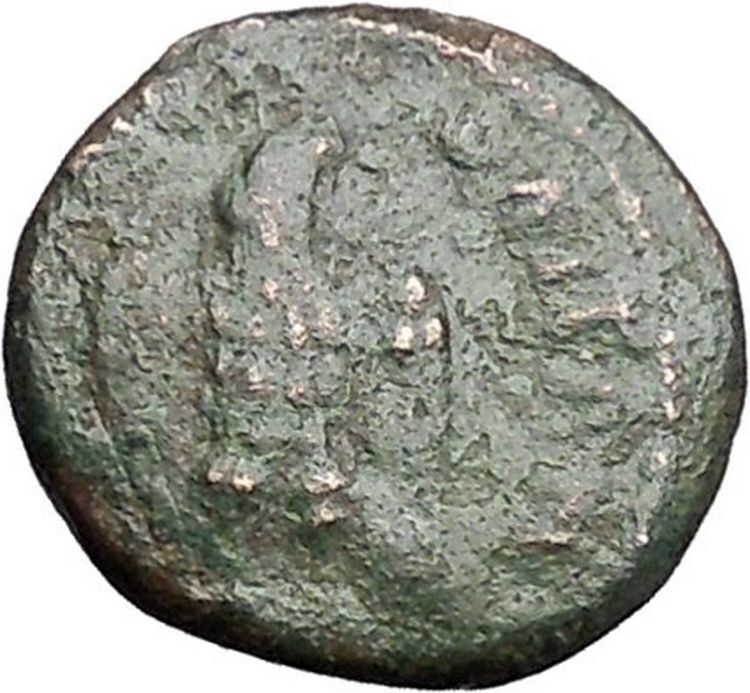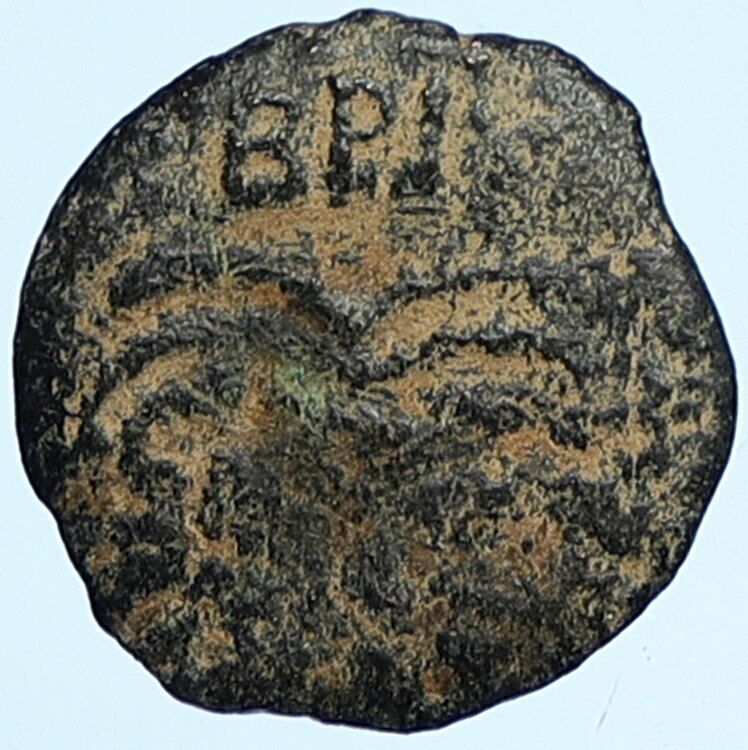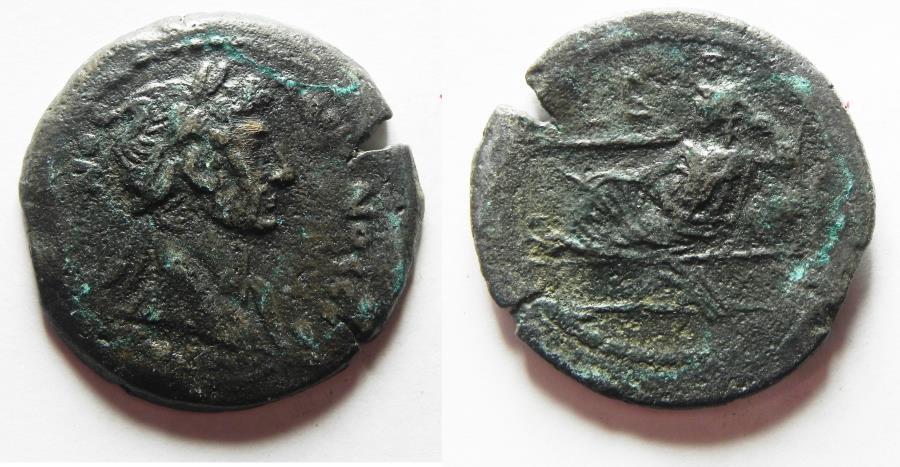-40%
217-218 AD Provincial Rome Phrygia. Cibyra. Æ Bronze Diadumenian Rev Tyche FINE
$ 81.84
- Description
- Size Guide
Description
Diadumenian was born on 14 September 208, named Marcus Opellius Diadumenianus, to Macrinus, the Praetorian Prefect and future emperor of Berber origin,[2] and his possibly fictitious wife Nonia Celsa.[3] Macrinus declared himself emperor on 11 April 217, three days after Emperor Caracalla was assassinated. Shortly after, Diadumenian was elevated to Caesar at Zeugma, while his guard was escorting him from Antioch to Mesopotamia to join his father. He was also given the name Antoninus, in honour of the Antonine dynasty, at this time.[4] On 16 May 218 a revolt against him was launched in Emesa by Elagabalus, a relative of Caracalla through his mother, Julia Soaemias, who was Caracalla's cousin. In order to put down the revolt, Macrinus led his legions to the praetorian fort at Apamea. There Macrinus elevated Diadumenian to Augustus, making him co-emperor. After Macrinus was defeated by Elagabalus on 8 June 218, at the Battle of Antioch, Macrinus fled north to the Bosporus. Before fleeing he entrusted Diadumenian to loyal servants, instructing them to take him into the Parthian Empire, to the court of Artabanus IV, to ensure his safety. Diadumenian was captured en route in Zeugma, and executed in late June.[5][6] His head was brought to Elagabalus, and reportedly kept as a trophy.[7]Numismatics
While Caesar, a large number of coins were struck for Diadumenian, although less than the amount struck for his father. Coins in which he is depicted as Augustus are extremely limited, and the only known coins from this time are denarii. This has led to the suggestion, first proposed by Ancient Numismatist Curtis Clay, that a large issue of coins was being made for Diadumenian, however they were quickly melted down when the news of Macrinus' defeat spread. Notably, some eastern provincial coins from the period exist which give Diadumenian the title sebastos, at the time the Greek equivalent of the Roman Augustus.[5] In terms of gold coins, Diadumenian has one known style of aureus, bearing his image on the obverse, and displaying Spes standing on the reverse, and one known style of half-aureus, bearing his image on the obverse, and displaying himself holding a sceptre and standard.[8]
Ancient Coins Guaranteed Authentic
I offer 30-day no questions asked free returns!
All Shipping Combined
Free Domestic Shipping
International Shipping Free For Purchases over ,000
